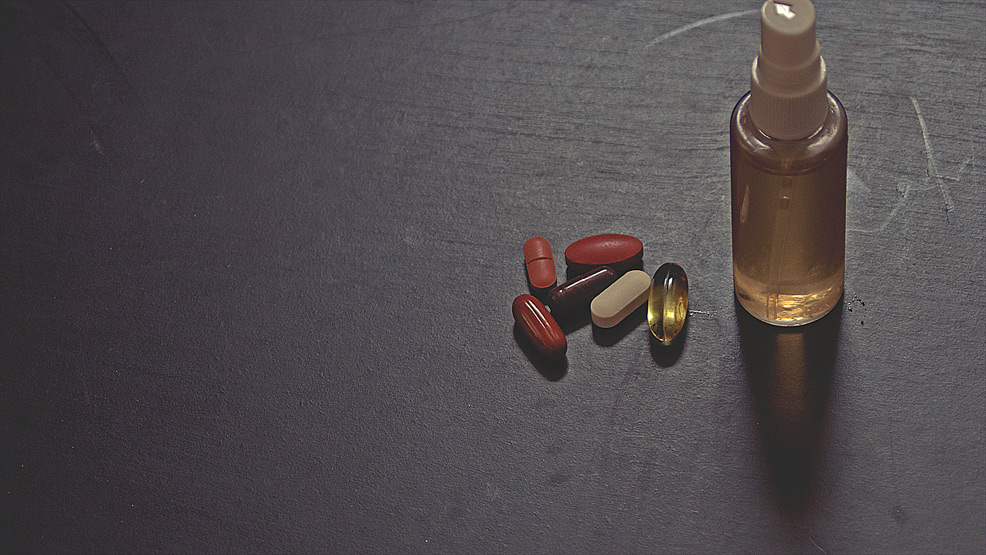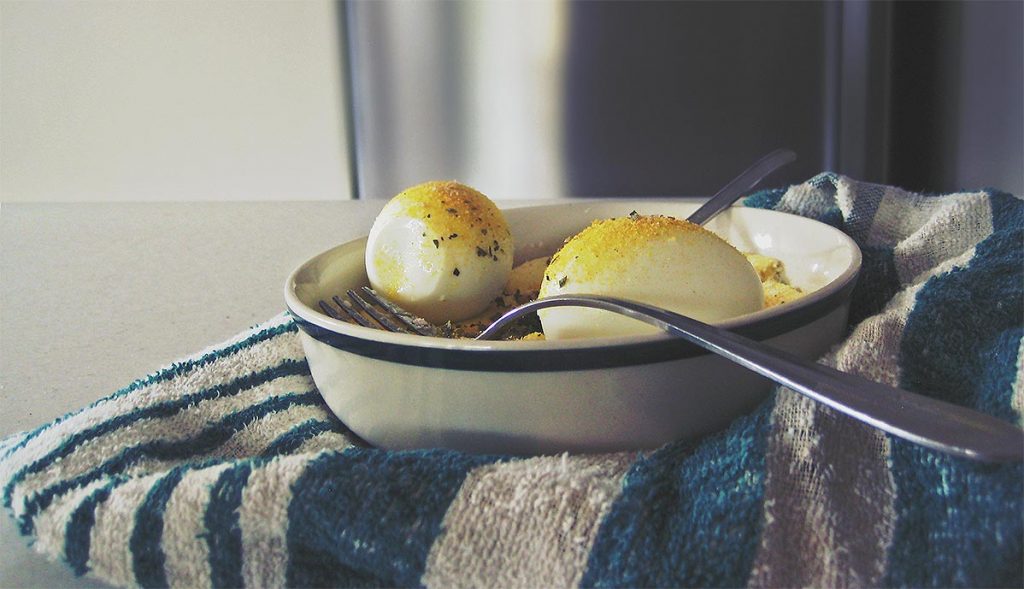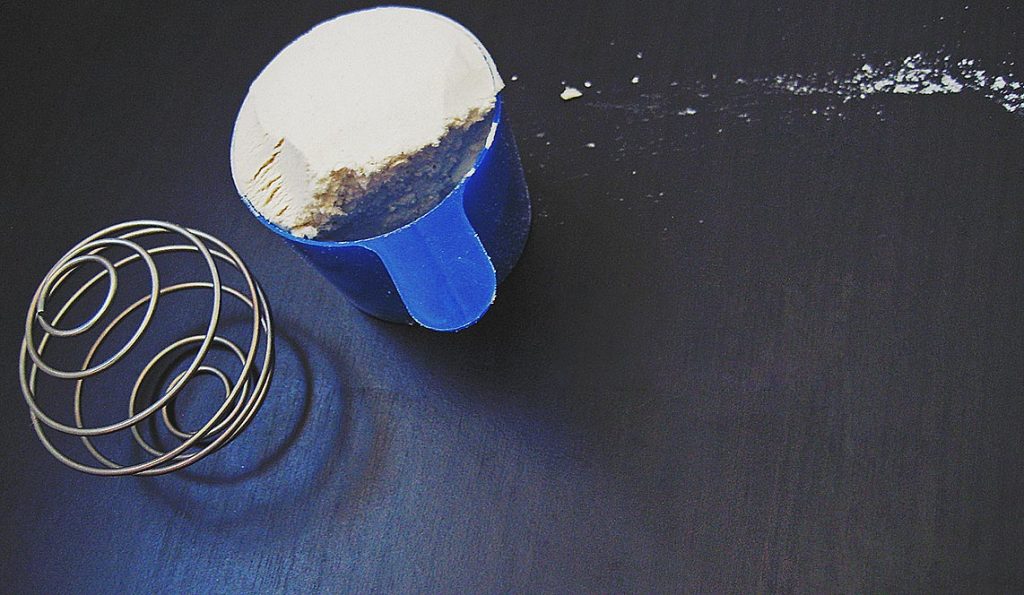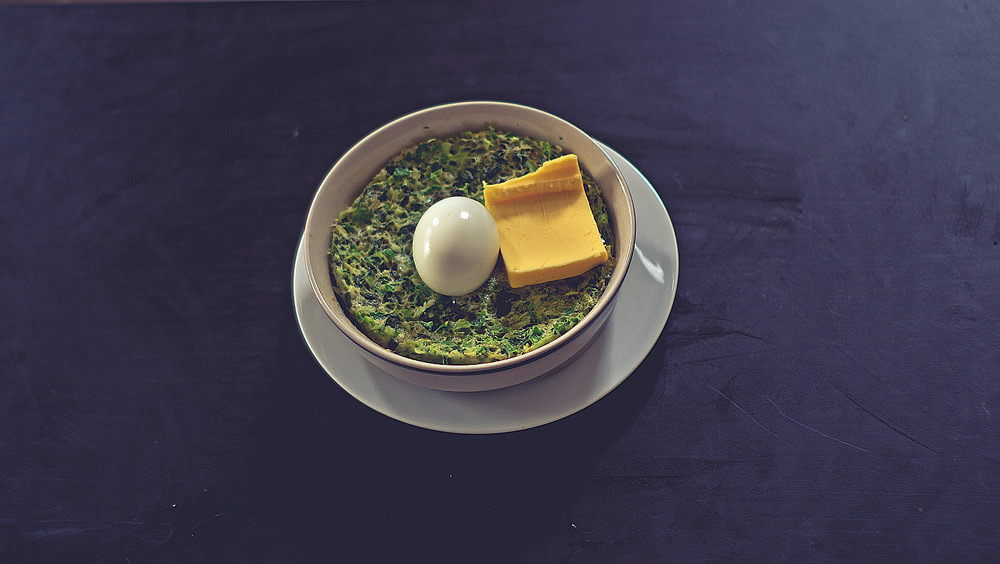
Fasting. Authentication. Inquire. Repeat
Cliff
Here I am sharing to all yet another sample of what I actually eat; from the budget range that's markedly higher to accommodate the CKD principles. From a rock bottom $30 and all the way to luxurious $40 per week's worth of spending - welcome to Keto once again since my brief three-week "diet-break" in early […]From a rock bottom $30 and all the way to luxurious $40 per week's worth of spending - welcome to Keto once again since my brief three-week "diet-break" in early November 2016. This is an insightful share across a span of at least three months (Nov'16 -> Early Mar'17) based entirely from self-written and recorded accounts.
What rationalised me to pursue and to share all these remained as one reason only - my own inner curiosity to subjectively improve anything of how I live and how I feel - both limited and stratified by my physiology and imposed socio-economical context/s of living.
As well as obviously - to proactively share amongst those who are curious and still unaware as to how or what exactly "Life" - in the day of frugal and minimal Ketogenic Eating truly entails, from day to night. As well as how resistance-training regiment/s CAN INDEED be made possible within the above contextual constraints.
The noticeable increase of budget from my absolute previous article (Keto-Pescan-Vegan) $20/$25 per week is due to the need to facilitate carbohydrate re-partitioning principles of Cyclical Ketogenic Diet (CKD). This - has certainly been a regiment I have since throughout 2016 adopted and experimented between long/sparse and short refeeding window/s. Allowing me to pursue and maintain a slow but progressively improving (within sensibility & few deviations) - strength and/or personal fitness conditioning.
Disclaimer
1/2 You are you.
Let me remind to all once again that when you see somebody else's "plan" or "a day of eating"; it is only there to be interpreted as an averaged-out sample of such a plan or a way of life. A snapshot of a day in the life of humility, resilience and of course - mild, not truly or objectively very deep - metabolic ketosis (technically measured under less than 1.0 MMOL via Blood metering).
Let us also recall the tiringly obvious. I am not you. Therefore, you - are not me. Once again reciting Friedrich Nietzsche's memoir - "There are no facts. Only interpretations." Whether or not CKD (Cyclical Ketogenic Diet) or even the SKD (Standard Ketogenic) is even "for you" requires a lengthy and timely reading from my previous article/s, my manuscript and any other source/s searchable BEYOND this blog.
You are your own rationale as well as responsibility for what and how you live.
Determining whether all of these is "for" you" or not for you - inevitably and contextually varies to your own perpetual differences within socio-economical/structural, metabolic and physiological circumstances. Next in the disclaimer comes the need for me to address this question below:
2/2 Do supplements, BCAAs, whey protein etc already accounted for in the price tag?
No. Of course not.The $30-$40 per week is the average expenditures on FOOD resources alone. Wait.... hang on I'm hearing groans already - "How contradictory! How is this not frugal / minimalist!? You cheated! You lied!".
I see each and every "supplementation" - be it extra magnesiums, zinc, antioxidant recycler (eg. selenium, vit e) etc - to NOT ONLY insures against my perpetual minute inadequacies for life - but also see it as resourceful investments themselves.
Let me ask you this - HOW LONG do any of this supplemental one off purchase actually lasts in terms of resource / consumption longevity? One week? One month? Or just one (gulp!) as a "snacking" necessity?
...Yet I see people live on perpetual / constant desires to abuse themselves from pizzas, doughnuts, designer brand ice creams one hour and the next. One day and the next. Beyond just food - I wonder how they perceive other things as "wants". One brand new TV over another. Next translucent iphone.....Or perhaps their greed - being confused as meritocratic pursuit/s? Their one empty apartment investment to the next and the next....ah, La Dolce Vita.
Furthermore - I am also aware of those at a discomfort immediately upon hearing the word "supplements"; quickly dismissing as though they "do not need" any of it further.
"Supplement" and "Food" coexists together on the same coin. However, you can only look at one side of the coin at any one time within a given moment. Is what you are eating will suffice this moment, this purpose or context? Perhaps yes, but only at this given time, circumstance and context.
...But perhaps not quite so in another moment, time and again - CONTEXT. So flip the coin over. Now see what you are missing. I don't care how "healthy" you are by institutional, or entitled belief/s - macro AND micronutritional gaps are inevitable in any human dietary paradigm. Even if you're an athlete. I'm cocky. I know. But that is grim reality.
So what fills in these gaps of ensuring your diverse micro-perpetual contextual needs are met? Supplementations. Supplementations are there to supplement your on-going LIFE inadequacies against any cellular energy expenditures, repair and maintenance. Full stop. End of story. For life.
I don't care if you are amongst many "purists" believing we should never take an extra synthetic vitamin or a mineral. But just consider our present and impending - reality of environment and consumption abuse from overall GROWING FOOD DEMANDS. What do you say about our soil minerals being depleted upon where all of our food grows?
If you think overpopulation is not a problem, well inevitably - it IS a problem. Full stop. I am not simply saying to gorge on tablets. Be sensible. Take only what you feel you need. Write down how you live and consume throughout life. Therefore, the costing/s as expressed in this article do not account for the additional expenses of micronutrients and supplementations.
Monday - Friday : SKD
I'll proceed into describing my accounts chronologically from day to night.
Note that throughout all images / photography you see for this post, you'll see a 30cm ruler placed closely to the meal's proximity. This is to show you just how small / large in perceptive dimensions of any given meal/s.
Morning / Meal 1
Monday mornings usually marks the starting cycle of standard Keto for me.
Typically I started the day with a half boiled water on a glass and down two (2) fish oil 1000mg caps, and 1x or 2x vitamin d tab and to ease myself for my first meal which consists:
- One or two hard boiled eggs, depending on how hungry I am.
- 1/4 teaspoons of both Sodium Bicarbonate + Cream of Tartar, One or two eggs mixed with at least 35g of flaxmeal or almond meal (if I'm feeling rich!), microwaved for two minutes.
- 25g (about two and half heaped teapoon dollops) of sour cream.
- 7 to 14ML of spanish extra virgin olive oil.
Chicken salt flavouring mix with turmeric, bit of extra salt to taste. Sometimes I alternatively use 30g to 50g shaved champagne leg ham/s (your local IGA® sometimes have them on special $9.99 per KILO) to save an egg or two for other meals later on. Also two teaspoons of mayonnaise with 15-20g of butter sometimes replaces the sour cream and olive oil combination.
Inbetween meal/s
If approaching colder seasons - I'd most likely rely on two shotglass of warmed chicken stocks. If whenever feeling mineral-depleted, I'd sprinkle an even mixture of himalayan and potassium lite 50/50 salt in the warmed stock.
Or otherwise - I'd usually make a cup of good ol' black tea (Coles® Ginger / Green tea - ACTUAL POWDER left in the cup). Or two cups of straight instant black coffees. Either tea or coffee these should be good for me until around when I'm due for my next meal usually around four or five hours later.
Supplementation: Milk thistle with taurines, magnesium citrates/nonahydrate, CoQ10, Zinc, vitamin d, vitamin E.

70g Beef liver oven baked, 2x 600g eggs with 30g coconut flour / flaxmeal / almond meal, 14 to 20g dollops of sour cream, 14 to 20ml olive oils, garlic salt seasoning.
Lunch / Meal 2
An introduction of meat based proteins.
- One hard boiled egg
- Any protein source/s - up to 100g of oven baked beef livers. Or 100g of economy beef mince or turkey mince (if I'm feeling rich). Or otherwise 90g tuna / salmon / sardine / mackerels, 45g TVP (dried weight before reconstituting), etc.
- 14g to 20g (about two and half heaped teapoon dollops) of sour cream or 15g of brazil nuts.
- 14 to 20ml of spanish extra virgin olive oil.
- Chicken salt flavouring mix with turmeric, bit of extra salt to taste.
- 100g to 150g of greens - cabbage, lettuce, etc.
- 35G to 45g of generic sliced mushrooms
Sometimes if I'm really hungry I'd opt for the "flax/almond meal base" like the Breakfast - 30g of flaxmeal or almond flours if I'm feeling rich with an egg mix then 2 minutes on the microwave.
However, generally - this is sufficiently replaced by a generous 150g serving of raw greens. Cabbage, cabbage, and more cabbage....Again, up to 20g of mayonnaise + 10g or 15g of butter sometimes replaces the sour cream and olive oil combo.
This breakfast tolls down to: 600 to 700 calories range average. 68% to 70% fats. 15 to 20% proteins. Remaining carbs from greens. Supplementation: half to oneMagnesium citrates/nonahydrate, CoQ10, 2x Vitamin D, Vitamin E, Aspirin 100mg (only sometimes, not every weekdays).
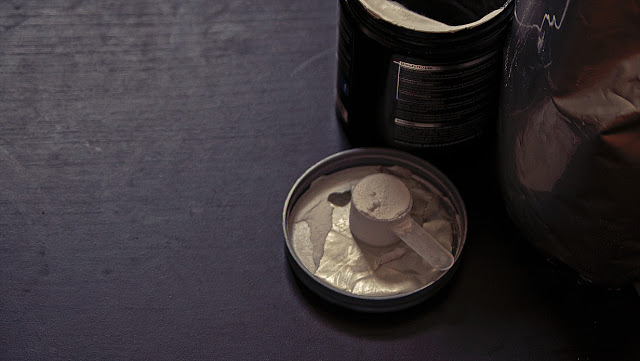
Preworkout
I'd use 10g of BCAAs, and the remaining left overs of creatine + green tea or leftover coffee. More often than not, I prefer to train with "less" solid things in my stomach.
If there are no BCAAs I would down teaspoon or half a teaspoon of coconut oil and off I go in the car, not a guarantee of painless workout but no choice but to put a blind faith - that anything would do.
On training days I'd take another 100mg baby aspirin just for insurance and extra pain tolerance/s or else I'd be looking into cycling in Cissus Quadrangalis for the week and/or even during the weekend's refeed.
Training
Effectively since January 2016 - I have adopted the classic Vince Gironda's variation of 6x6 training. Limited rests (no more than 30s on all exercises except compounds / squats or sumo deadlift compounds this I require up to the mid 30s).
This demands high repetitions, SENSIBLE levels of intensity - four day splits. The number of workable days vary from climate / season to season, I am using 4 as a close yearly average number of training days per week.
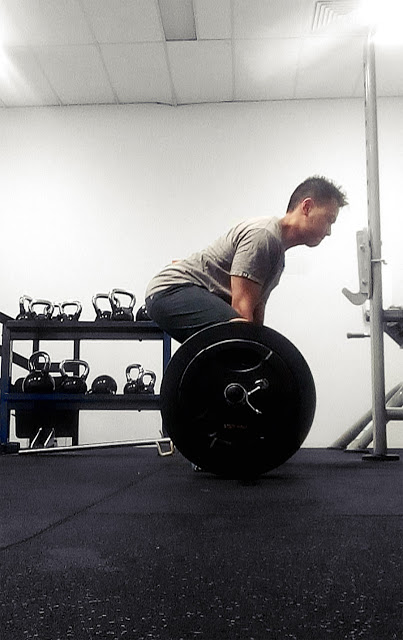
I always begin with (all barefooted / socked) - either a barbell squat (usually low-bar position to somewhat ease knee pain), sumo-deadlifts, jeffersons or dumbell (resting on front delts / shoulders) based squats. For these compounds depending on the load I'd take one rep less (making it 6x5) with more resting period under 40 seconds.
... And for the rest of eight or so exercise across 45 to 55 minutes - it's no holds barred glycogen depletion working set/s one after another. No facebooking, no chatting, no sitting around, not even checking the phone unless if I need to skip a track or quickly read my previous workout/s. Recuperate just under 30s and off I go to the next set.
Unlike many advocating on drinking those glucose-fested postworkout fluids immediately - I do not believe this to be as necessary as previously thought.... unless if I have been training back to my old habits on high carb, low fat (which that WILL make me hungry).
I'd argue that normalising your overall nervous system is far more important first before ingesting ANY exogenous nutrients. I have no scientific literature to support this other than how I feel from experimenting one thing over another. I always finish the workout with the same brief hip and mobility stretches at the start of training then a rinse. 15/20 minutes later upon arriving home I'd start downing a 30g scoop of flavoured whey protein concentrate on a 500ml to 650ml water content on average.
As given from my negative/adverse experience - downing a whey shake so soon without letting your nervous system and blood pressure to stabilise - does contribute to mild or even noticeable heartburn's. Especially when driving at the sametime.
Also most important to note - MINERAL DEPLETION/s during the warmer seasons. I'd like to reinforce once again on the importance of chewing just a bit of himalayan + potassium 50/50 lite salts (even just a tiny lick surprisingly works). If you at any stage felt too "numb" or hazed out, this is surely a sign to replenish the electrolytes. NEVER ignore its symptoms or you will be forced to deload your training to survive the 200+ reps.
YOU WILL be minerally depleted after having done 200+ reps. Unless if you're on PEDs, you are a false god among men/women if you believe you aren't feeling depleted with that much training load day in and day out.
That's it. No dextrose. No sugars. No postworkout cheatmeal doughnuts and tubs of icecreams (yup, even on leg days). The 30g postworkout WPC shake is usually done in about from as quick as 30 to 40 minutes to all the way an hour before my next meal below.

Whole egg, 90g sardines, 20ml olive oil, 10g of sour cream, garlic powder, and 100 to 130g of riced cabbage. No, not the carby "rice" I'm referring to.
Dinner / Meal 3
More or less the same as lunch.
- Any protein source/s - up to 100g of oven baked beef livers. Or 100g of economy beef mince or turkey mince (if I'm feeling rich). Or otherwise 90g tuna / salmon / sardine / mackerels, TVP, etc.
- 17g (about two and half heaped teapoon dollops) of sour cream.
- 15 to 20ML of spanish extra virgin olive oil.
- Chicken salt flavouring mix with turmeric, bit of extra salt to taste.
- Another up to 150g serve of cabbage.
- 35 to 50g mushrooms sliced.

Meal 4
About one and half hour I will then have another meal, of course not as heavily as a standard meal.
- A sprinkle of both cream of tartar + sodium bicarb, One egg with 25g of flaxmeal, microwaved for two minutes.
- 10g of sour cream or 7ML of spanish extra virgin olive oil.
- Chicken salt flavouring mix with turmeric, bit of extra salt to taste.
- A small serving of sauerkraut / celery sticks / or just small handful of cabbage.
Meal 5 / prebed
Last meal would certainly call for a shotglass of warmed chicken stock with 2x fish oil caps.Or otherwise, in hot summer months - up to 4 fish oil caps (2 and 2 about 30 minutes apart) before retiring for the day.
That concludes for a daily sample meal breakdown of SKD Monday to Friday.
The Refeed : 24 hours sample
Now, during saturdays and sunday - we have the refeed period.
I have well experimented different refeed windows in the past. Once every few months. Once every few weeks. To more recently - once or twice (48 hours) every week. 48 hours is usually my preferred refeeding as given to my physiology and training scheduling.
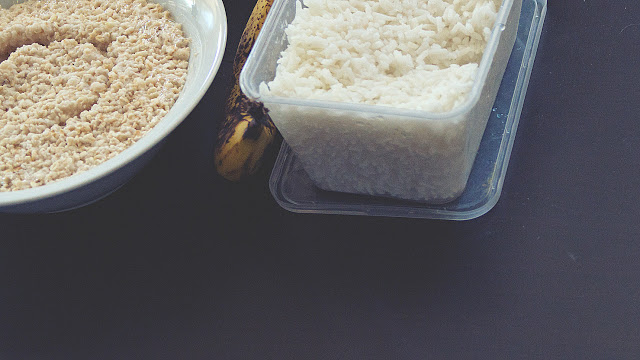
Meal 1 "Bro-food" Oats or cereal+milk+whey
Classic oatmeal "bro-food" breakfast. Just like Mondays I started with a half boiled water on a glass and down two (2) fish oil caps, and a vitamin d tab; just to ease myself for my first meal which consists:
- 100g of oats (once reconstituted with water and 3 mins in the microwave) = 1 large bowl of cooked oats.
- 30g scoop of flavoured WPC.
- Teaspoon of cinnamon.
- Two heaped teaspoons (approx 25g) of honey.
- 1x banana or 200ml of Hi-Lo milk (see my short thoughts on this below)
Alternatively - I'd mix 120g of sultana bran cereal, 240ML of hi-lo milk and 20 to 30g scoop of whey (also put in a bit of creatine in the mix to encourage glycogen uptake) and eat. I'd warn anyone however who haven't eaten back these "roughage" cereals - you will HAVE TO prepare yourselves for some loose stools and some gas in the mean time as well, so be aware and always write down how you feel.
This meal tolls down to: easy 700 to 800 calories range on average. 60 to 75% carbs. 15 to 25% proteins. trace fats. Supplementation: 1x Magnesium citrates/nonahydrate, 4x vitamin d 1000ius, 2x fish oils.
My (short) thoughts on using milk for refeed
For those of you who are thinking of rebulking / refeeding (men or especially women) - think twice before hoarding over those GOMAD / Gallon of Milk A Day protocols. Yes, it's tempting and convincing that milk actually do provide an array nutrients on the cheap.
...But I'd say no to incorporating a full GOMAD daily. Or even 1/2 the GOMAD PER DAY. Predominantly that most of us, including me all are; in some margin of respects - pasteurised-milk intolerant.
You may have all usual predispositions towards its side effects. My side effects certainly speaks to me intensely far more on the UHT / Long Life boxed ones than those UHT's from the FRIDGE. If the gas, the headaches, the excessive bloat, etc goes on far too often - I strongly recommend you to NOTE DOWN what type and longevity of milk (box vs fridged), lactose-free- or not (lactose-free from my experience gives an "off-tasting" finish) before then lowering your overall milk intake.
Try other 'easier' dairy sources to palatably volumise your food - Yoghurt is one of them.
Do I still condone drinking milk? I'd say a moderate yes to quench that creamy palatability we'd often miss during the SKD period. But milk on its own alone - should never of course taking up the MAJORITY of all your daily refeed macros.

55g sultana bran cereal, 30g of frozen berries, 120ML hilo milk, 15g of wpc powder, 7-10G of Palatinose®.
Inbetween meal/s
Three or four hours later, depending on how hungry I am I will either make myself a cup of tea / coffee and another meal that consists:
- Multiple fruits OR
- 55g cereal sultana bran with 15g of flavoured WPC mixed with 120ml milk / water and 7-10g of Palatinose®.
Supplementation: Milk thistle with taurines, magnesium citrates/nonahydrate, extra multi-vitamin, vitamin d.

100g spirals, 70 to 80g (about 3x heaped tablespoons) tomato paste + water + garlic + herb powders, 100g of wholemeal flat bread and 100g of red kidney beans.
Lunch
Actual meal obviously varies from potatoes to rice or pasta.
- 100g pasta dried weight (88g carbs) or 275g of cooked rice (90g carbs) or 350g cooked / nuked potatoes (approx 80g carbs).
- Any protein source/s (IMPORTANT : MUST BE HALF the usual palatable serving) - Usually 45g tuna / salmon / sardine / mackerels, 25g TVP (dried weight before reconstituting), etc. Or 100g of chicken breast / redmeat based proteins (if I'm feeling rich; as to the above picture). Otherwise, beans - 100g red kidney or butter off canned ones.
- Condiments : varies. This is the biggest markup of pricing.
- A boiled egg or a spray of spanish extra virgin olive oil.
- 100g of greens - 100g of cut celery, or 100g cut lettuce, boiled / microwaved cabbage, sauerkrauts, etc.
Easily be 700 to 800 calories range average. 60 to 75% carbs. 15 to 25% proteins. trace fats. Supplementation: Zinc, half to one Magnesium citrates/nonahydrate, 2x Vitamin D.
Inbetween Meal/s (again)
Two hours later depending on how hungry I am I'd choose two of the following inbetween meals about 1 hour apart from each other for it last all the way to the evening.
- Multiple fruits / or two bananas. OR
- 50g oats, 15g scoop of WPC, 12g of Honey, Cinnamon OR
- 55g cereal sultana bran with 10g of flavoured WPC mixed with 100ml milk / water OR
- one and half full wholegrain wraps (approx 45g carbs), salsa, low-fat cheese / yoghurts OR
- 250ML of HiLo milk, full scoop of whey shake / mass gainer shake to fill 700ML shaker.
Supplementation: Milk thistle with taurines, magnesium citrates/nonahydrate, extra multi-vitamin, vitamin d. Easily anywhere 500 to 700 calories range average. 60 to 75% carbs. 15 to 25% proteins. trace fats.
Dinner
Actual meal again - obviously varies from potatoes to rice or pasta.
- 100g pasta dried weight (88g carbs) or 275g of cooked rice (90g carbs) or 350g cooked / nuked potatoes (approx 80g carbs).
- Any protein source/s (IMPORTANT : MUST BE HALF the usual palatable serving) - Usually 45g tuna / salmon / sardine / mackerels, 25g TVP (dried weight before reconstituting), etc. Or 100g of chicken breast / redmeat based proteins (if I'm feeling rich; as to the above picture). Otherwise, beans - 100g red kidney or butter off canned ones.
- Condiments : varies. This is the biggest markup of pricing.
- A spray of spanish extra virgin olive oil.
- 100g of greens - 100g of cut celery, or 100g cut lettuce, boiled / microwaved cabbage, sauerkrauts, etc.
Dinner #2
Another meal, perhaps not as big as a standard meal. More or less the same setup but only a fraction of the size. For example:
- 70g / one serving of Kal wholemeal turkish wrap
- 35 to 50g of beans / kidney beans
- Some cabbage
- 35 to 40g dollop of tomato paste and,
- garlic powder to taste
Supplementation: half to one Magnesium citrates/nonahydrate, Multi-vitamin, Zinc. 60 to 75% carbs. 15 to 25% proteins. trace fats.
Pre-Bed
- 250ML of HiLo milk, full scoop of whey shake / mass gainer shake to fill 700ML shaker. OR
- if I'm still quite hungry = 50g oats, 15g scoop of WPC, 12g of Honey, and a tsp of Cinnamon.
Overall Macros
So that's it for a breakdown sample.
During SKD my calorie range has been anywhere between in the low 1900s ("struggling yet thriving pauper") to as luxurious as 2400 ("king of the estate"). Realistic average remains to be sub 2200 cals per day. The 1848 calorie mark I've set within MFP® is my minimum calorie intake.
There is one or two odd days every few months where I lived on as low as sub 1700 calories; due to finance /resource scarcities / to hold-on until the next $35 grocery cycle. Whilst I still am nonetheless able to live, this much calorie restriction is NEVER what I would condone as objectively sustainable.
The refeed day/s
During each Refeed day (typically no more than 48 hours) my calorie range would be at least 3400+, but no more than 4000. Avoiding fats may seem depressing to me; but what makes the refeed period strictly that more difficult is to WATCH OUT FOR EXCESSIVE protein intakes. I cannot believe how easy it has been through many, many months of sporadic refeedings whereby I can easily trip over 200g worth of proteins in one day.
My Refeed days macros are SKD's inverted. About 65 to 68% carbs, 18 to 22% proteins, and fats generally restricted under 60g or just trace. The lowest I've gone on record was 41g of fats.
Ironically I find (thus far) - that it is FAR MORE DIFFICULT to go down REALLY low on fats....as compared to going REALLY low on total carbs (including fibre).



